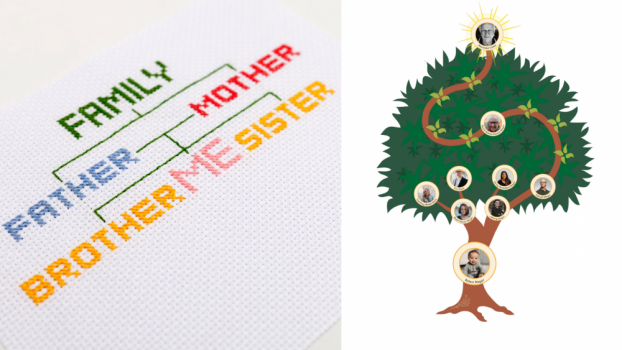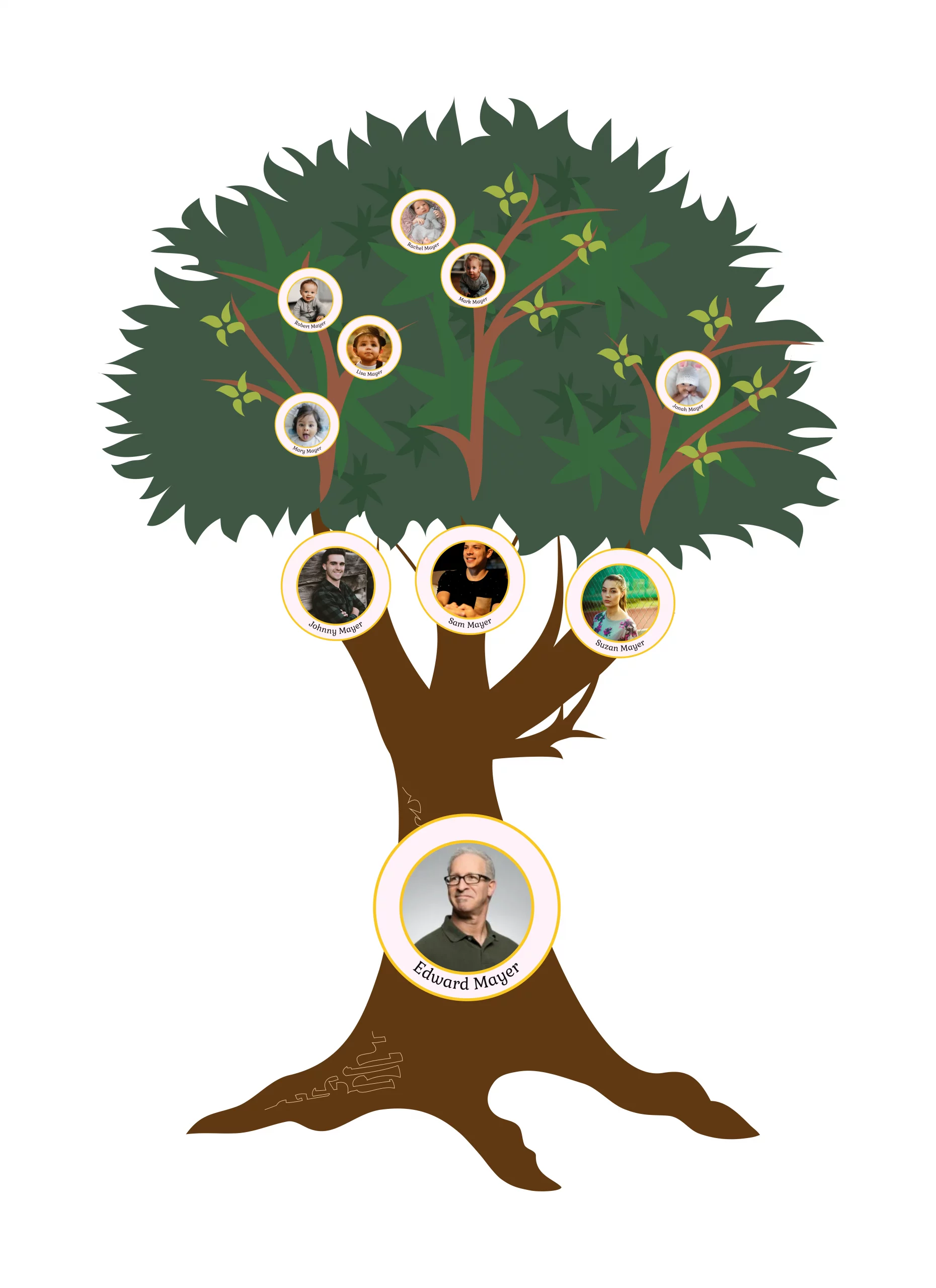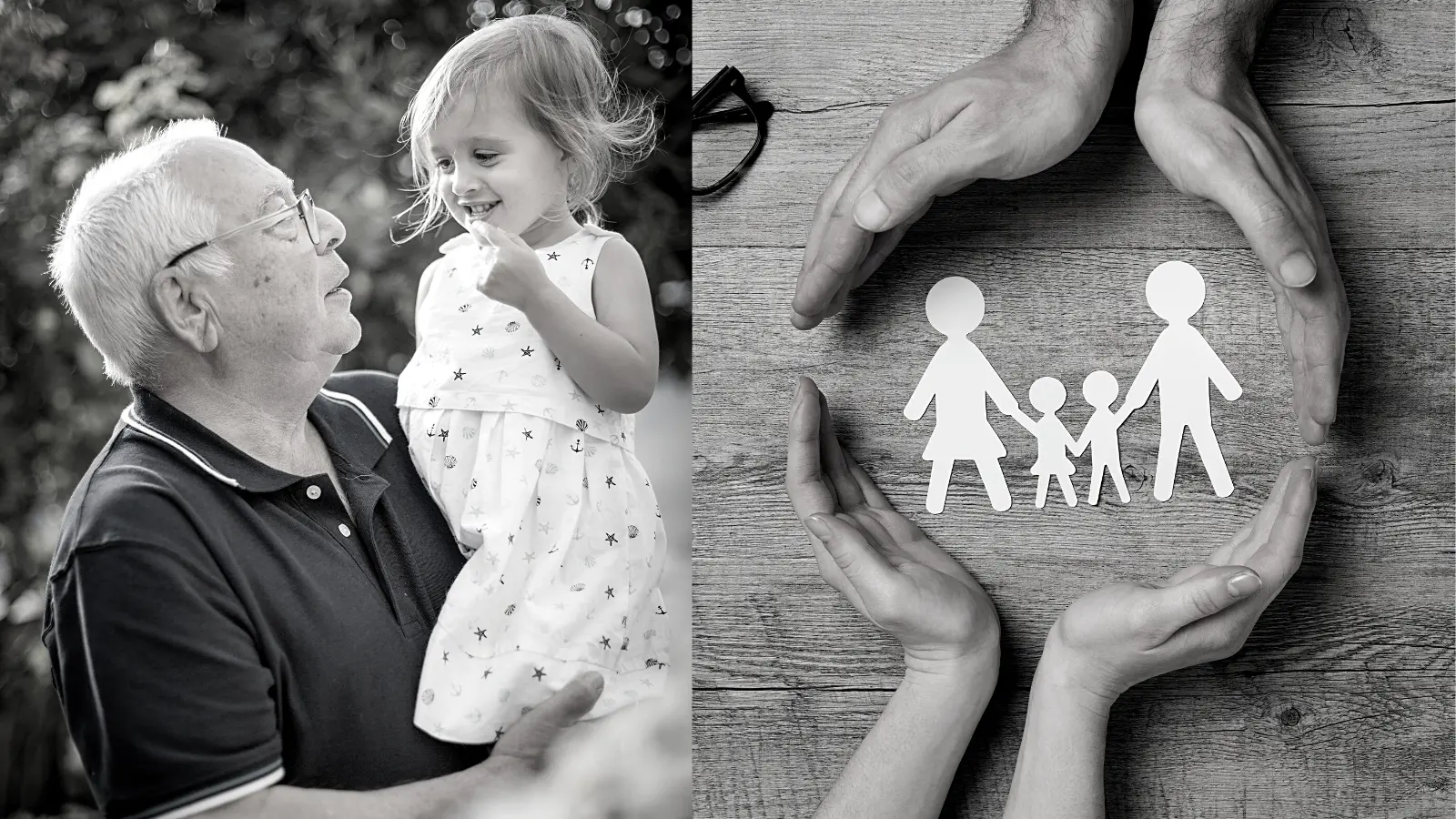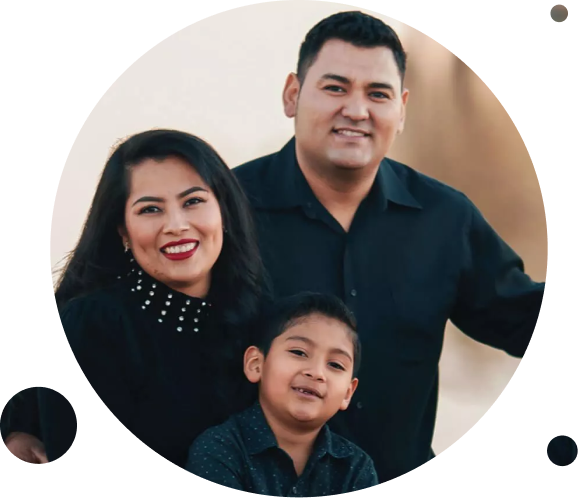What is a Family Tree and Why is It Important?

In many ways, living a fulfilled life has a lot to do with knowing who you are and where you come from. At the center of all that is the concept of family. People realize the value of knowing your familial heritage and passing this knowledge down between generations. And that’s why we make family trees.
So here’s a breakdown of the subject. This is not a piece on how to design a family tree. Instead, we look at the definition of a family tree, and some of the motivations behind familial tree creation.
What Is A Family Tree?
A family tree is some sort of chart or diagram that shows the members of a family and the relationships between them. Because people tend to get creative with them, family trees take all sorts of forms. This might throw you off in some cases, but at the end of the day, it’s that simple. Sometimes, challenges like missing data, or different goals may lead people to adjust the type of chart they use, so you might see different trees illustrated in different ways.
How Do Family Trees Work?
Family trees provide you with a distinctive and simple way to immortalize your ancestry. They will also serve as a roadmap and the foundations for future research of establishing family ties.
Family trees have traditionally been drawn by hand on charts made of paper and published in books. But nowadays, most people use online platforms like Treemily, MyHeritage or Ancestry to digitally generate their ancestries. Making a digital tree has a lot of advantages, such as the simplicity with which information can be added and updated. You can save copies of the records you find online and attach scanned images of pictures and documents to a family member’s profile (e.g. photos, birth/death certificates, etc.).
Users of family tree software and family tree websites can also download their data into a file known as a GEDCOM, or Genealogical Data Communication. This unique kind of file enables the user to transfer family tree information between family tree applications.
However, arguably the most significant benefit of a virtual family tree is that it can be easily shared with family members and saved for use by and expansion by future generations.
How to Start a Family Tree?
Creating a family tree requires a lot of hard work and dedication. The following 4 steps can best describe a typical family tree-building process:
Research and gather information
Start by conducting genealogical research on your family – write down your knowledge, enlist the help of relatives to fill in the blanks, and go through photos and papers. You’re also well advised to look for census data, news articles, land deeds, and other documents that can prove your history in libraries and online genealogical resources.
Keep in mind that due to the scarcity of trustworthy records, your ability to go back in time is limited. It is quite difficult to locate authentic documents that are older than a few hundred years due to the fact that many records have been lost due to fires, floods, acts of war, and carelessness. How far back you can go will depend on where your ancestors come from because some regions of the world were better at keeping and preserving documents than others. Thus, don’t worry if your family tree only goes back three or four generations – the most important thing is to enjoy the process.
Create a draft
Make an outline of a family tree using all the information you have gathered. Start by charting the relationships between yourself and your closest relatives and work your way up, or start with the earliest ancestor you are aware of and work your way back to yourself.
As mentioned previously, you may design a family tree online using Treemily and our family tree diagram maker, or you can draw your family tree by hand using a pen and paper. You can choose a family tree template online and edit it with a few quick clicks using our visual workspace.
Fill in the family members information
Regardless of the family tree type you’ve chosen, now it’s time to put photos and facts to the names. Place images, dates of significant events, and any other details you want to add for each of your relatives. If you’re doing this on paper, you will need a lot of printed out material and glue to make the best out of your tree. Doing this online will be easier and won’t require as many resources, but this is ultimately your preference.
Choose the design
Once you’re done with the most important things, you can now proceed to polish the visual aspect of your family tree. Color-coordinate shapes, lines, or labels to categorize relationships, distinguish between living and deceased relatives, and group generations.
You may decorate your family tree with icons, graphics, pictures, or backgrounds to make it more eye-catching. If you’re using Treemily, you will also have plenty of options to choose from with regard to family tree types (more on those later).

Family Tree Types
There are many more family tree types than the ones described below, however, the following four are the most commonly used:
Ancestor Tree
The ancestor tree is arguably the most common type and is the type that most people associate family trees with. It’s a version of a tree that starts with one person (typically the one who’s making the tree) at its roots and shows all the known ancestors of that person as the tree goes up.
Descendant Tree
The descendant tree is the opposite of the ancestor tree. Instead of showing all the older generations connected to the tree’s protagonist, this one shows all the descendants of that person. Descendant trees are most commonly used when at the center of a tree we have someone who is already in their senior years or even passed away.
Dynasty Tree
The dynasty tree is a subtype of the ancestor tree. Their logic and architecture are the same, however, a dynasty tree has an additional goal – highlighting famous distant relatives (if there are such), no matter how far they are timeline-wise. It may look exactly like an ancestry tree, but have a visually distant entry from the rest of the tree, dating back centuries ago. For example, a person may be keen on showing that some centuries ago they had a monarch or a scientist in their bloodline.
Family Charts
The most visually simplistic type of family tree – in fact, it rarely looks like a tree at all. The family chart is basically a well-organized database containing information about all known relatives, organized as a table or just a list with bullet points.
Who Should You Include in Your Family Tree?
It’s always only up to you to decide who you want to include in your family tree and count as a family in general. Sometimes it may depend on your initial research objectives and how far you’re planning to go with your tree. Look for siblings, aunts, uncles, and cousins in addition to direct descendants if you want to create a tree that includes all potential family members.
It’s also possible that you have relatives that don’t conform to the stereotype of a spouse, wife, and biological children. For instance, you might have step siblings, half-uncles or aunts, or adoptive cousins. In those cases, yet, it’s totally your decision, but remember that, in the end, every member of the family plays a significant role in the family’s history.
Where Do Family Trees Come From?
The exact origin of the practice is difficult to definitively pinpoint, with depictions of familial trees appearing as far back as in medieval art and in different places in the world. What we do know, even just by looking at some of the oldest family trees, is that people have been documenting their heritage for a very long time.
Why create a family tree?
Creating a family tree requires a significant amount of work, research, and can be complicated. So why do it?
Here are a few good reasons that might make it worth your while:
To feel a connection to your family
One of the first and most obvious reasons why people create family trees is because they want to establish the roots of their identity. This plays an important role in the mental well-being of an individual, this feeling of belonging and knowing who you are.
To trace genetics and family health concerns
Many health-related issues are hereditary. A glance at your family tree can tell you a lot more than just who your forebears were. You can learn what they succumbed to and find out what health problems run in your family. You can then diagnose certain issues early, make the right health choices, and sidestep banana skins that got the better of your relatives from past generations.
To settle questions of land ownership by providing proof of descent
Land disputes are quite common. In many of these legal battles, determining who owns what is often settled by going back generations and proving that the historical owners of the property are your ancestors. Proving this may also prove your legal entitlement to the land.
To determine genealogical proof of a connection for potential heirs
Legal disputes are not just limited to land. When a person passes on, it often falls to the state to determine who will inherit their assets in the absence of a will. Or even then, a will may be contested by different parties all laying a claim to the assets at stake. This is especially true when the person had a significant amount of wealth. A familial tree can help to uncomplicate matters.
To have fun
For many people, putting a family tree together is not an end in itself. It is about the journey of discovery. It is a personal Indiana Jonesy sort of experience, diving into history and putting clues together to write your own story.
To preserve the knowledge of ancestors who contributed to family traditions
If familial traditions are not passed down to new generations, they inevitably die away. A good medium for keeping them alive is through family trees. Young members of the family can learn and honor their heritage by keeping those customs alive.

To find out if you are related to someone famous
There are many stories where people have unexpectedly discovered that they are, in fact, related to royalty – even if that is just royalty in Hollywood. For many, the idea that they may somehow be royalty themselves is reason enough to start seriously exploring the possibility. After all, who knows, right?
To learn about family history in relation to historical events
Historical events tend to shape the world and future generations. This is borne out very clearly in families. For a lot of people, creating a family tree is a journey of discovery linking them to historical events like wars, for example.
To involve children to learn about ancestors and preserve family stories
And finally, a familial tree has intrinsic value as the source of vital historical information for individuals, and also for future generations. For many, it is therefore important that they keep this familial history alive and continue adding to it. The way to do this is by educating children about its importance so that they in turn can add to it in future.
Conclusion
A family tree can be a source of great pride, joy, and can bring an irreplaceable sense of belonging for a lot of people. Family trees keep family traditions alive, tell the stories of past relatives, and are incredibly valuable stores of knowledge. If you are thinking about it, there are at least a couple of reasons why starting to compile your own familial tree is a great idea!





